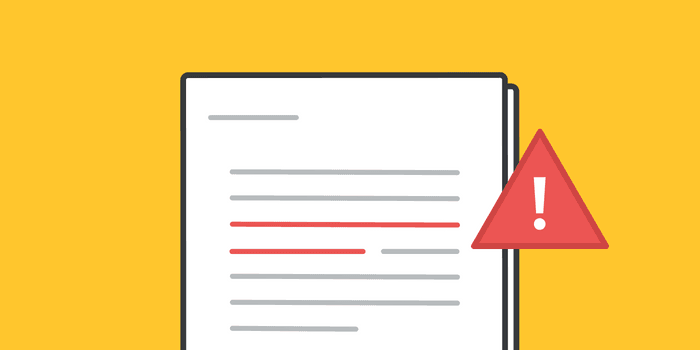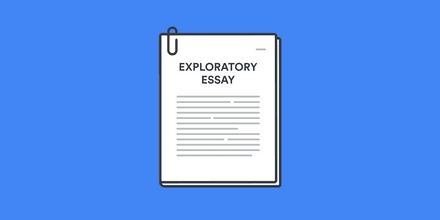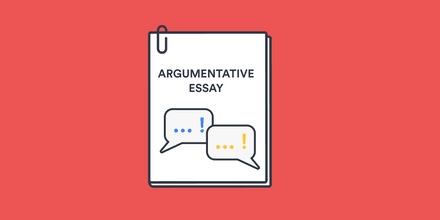
You may be thinking that avoiding plagiarism is simple. It’s just a matter of not copying and pasting other people’s work and properly citing your sources, isn’t it? Well, yes and no.
Plagiarism can take a few different forms, some obvious and some a little more subtle. It’s even possible to plagiarize unintentionally or accidentally.
Given how serious the consequences of plagiarism are (which we’ll get into later in this article), it’s important to understand in detail what constitutes plagiarism and how you can avoid it.
What is plagiarism?
Simply put, plagiarism is the act of taking someone else’s work and presenting it as your own. Committing plagiarism is unethical and a breach of academic integrity.
The different types of plagiarism
Even though the definition of plagiarism is straightforward and concise, the act of plagiarism can take a wide variety of forms. Here are some of the most common types of plagiarism:
Direct plagiarism or copy-and-paste plagiarism
This is what typically comes to mind when we think of plagiarism. It involves taking a piece or section of work created by someone else, without putting it in quotation marks or citing the source, and passing it off as your own.
Global plagiarism
This type of plagiarism involves taking another person’s work wholesale and claiming it as your own. This includes having someone else, such as a friend, family member, or classmate write work for you as well as purchasing an essay from an essay mill.
Mosaic plagiarism
Taking ideas and/or pieces of text from different sources and fitting them together to create a “mosaic” of borrowed ideas is another common form of plagiarism, also known as patchwriting or patchwork plagiarism.
Self-plagiarism
Reusing your own work without acknowledging that it’s been previously submitted elsewhere is also considered plagiarism. While some may question whether this should count as unethical since you are simply repurposing your own original ideas, the fact is that when you submit scholarly work as part of your academic career, it is expected to be original. Reusing old work is a violation of academic integrity.
Unintentional Plagiarism
Even students with no ill intent can find themselves plagiarizing work accidentally. Unintentional plagiarism happens when students fail to cite or misquote sources, and when they unintentionally repeat ideas, phrases, wording, and sentence structures from others without the appropriate attribution. It’s important to know that unintentional plagiarism is considered just as serious an offense as any other type of plagiarism and can incur the same consequences.
Examples of common types of plagiarism
While global plagiarism is relatively self-explanatory, involving the wholesale copying of someone else’s work, it may be useful to look at some examples of the other forms of plagiarism to get a sense of what they look like in practice.
| Type of plagiarism | Source text | Plagiarized text |
|---|---|---|
Direct plagiarism | “James Cameron's 194-minute, $200 million film of the tragic voyage is in the tradition of the great Hollywood epics. It is flawlessly crafted, intelligently constructed, strongly acted and spellbinding.” | The blockbuster film Titanic is considered a classic. James Cameron's 194-minute, $200 million film of the tragic voyage is in the tradition of the great Hollywood epics. It is flawlessly crafted, intelligently constructed, strongly acted and spellbinding. It is no surprise that it won several Academy Awards the year it came out. |
Self-plagiarism | Student’s original work for one class: | Student’s repurposed work for a different class: |
Mosaic plagiarism | Source 1: | Eyeliner has been around for at least 12,000 years and possibly longer. Women and men of certain social classes in Mesopotamia and Egypt applied kohl to their eyes, not only as a cosmetic, but as a way to protect against the heat and wind of the desert. |
The potential consequences of plagiarism
Your academic institution will have its own policies on plagiarism and academic integrity, and it’s important to familiarize yourself with them. In general, the consequences will depend on the type of plagiarism that has been committed, and they can include the following:
- Receiving a failing grade in the course
- Being suspended temporarily
- Being expelled from the institution
How to avoid plagiarism
Avoiding plagiarism and keeping your academic record (and your conscience) clear comes down to one basic step:
Whenever you quote, paraphrase, or reference the words, ideas, or work of someone else, give proper credit to the original source with a citation.
What does and doesn’t require a citation
Before you decide to err on the side of caution and fill up your essays with citations for every piece of information you include, you should know that not everything needs to be cited. Information that is widely known by most people is considered “common knowledge” and does not need a source. Some examples of facts that are common knowledge are:
- Singapore is the only place in the world that is a city, an island, and a nation, all in one.
- Spandex is a synthetic fiber commonly used to manufacture sportswear.
How to properly cite sources
Many citation styles exist, such as APA, MLA, and Chicago. Which one you should use will depend on your institution and field of study. Check with your professors to confirm if there is a preferred format they would like you to use.
Across all styles, citations generally occur in two places in a work:
- As an in-text citation in the main text of a document
- In the reference list or works cited list
In-text citations are typically brief and require only the name of the author and the publication year of the source. The reference list, or works cited list, contains the complete information about the source.
Collecting and formatting citations can be tedious work. Because of this, it’s common for students to put it off until the end of their essay writing and then they’re often dismayed to find they still have at least a couple of hours of work ahead of them to ensure their citations are accurate and complete.
One easy way to save time and stress is to use a citation generator. BibGuru makes the process fast, easy, and headache-free—all you have to do is drop in the URL of the website or search the title of the article or book you’re citing and BibGuru does the rest. You can try it out here.
However you choose to approach your citations, it’s essential to make sure that you’ve given credit where it is due and that the work you present as your own is original and authentic.
Frequently Asked Questions about plagiarism
🌟 What is plagiarism in simple words?
Simply put, plagiarism is the act of taking someone else’s work and presenting it as your own. Committing plagiarism is unethical and a breach of academic integrity.
🍏 What are the 4 types of plagiarism?
The 4 most common types of plagiarism are:
- Direct plagiarism
- Self-plagiarism
- Mosaic plagiarism
- Accidental plagiarism
🚙 What is the most common form of plagiarism?
The most common form of plagiarism (and the best known) is direct plagiarism, or copy-and-paste plagiarism. It involves taking a piece or section of work created by someone else, without putting it in quotation marks or citing the source, and passing it off as your own.
🕵️♀️ Is plagiarism a crime?
Generally, plagiarism is not considered a crime, but it can have consequences. If you get caught plagiarizing in a course, you can receive a failing grade, be suspended temporarily, or even be expelled from the institution. Furthermore, in academia, it is considered a serious ethical offense.
🤔 Is using a template plagiarism?
This really depends on the template. If the template is considered "common knowledge", then it is not plagiarism. But if the template is more sophisticated and was clearly created by someone else, it requires a citation.


